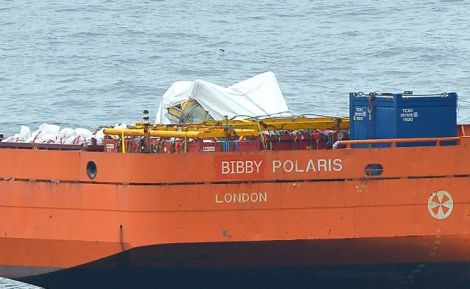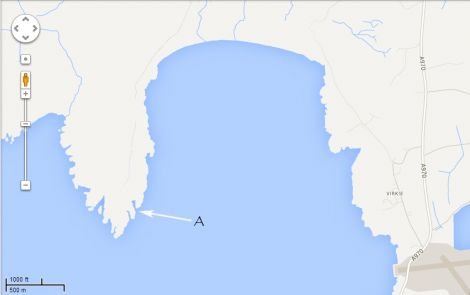News / Chopper’s missing blackbox still beaming out
SPECIALIST teams were still hunting throughout Tuesday for the black box flight recorder from the Super Puma L2 helicopter that crashed into the sea with the loss of four lives on Friday.
Although the flight recorder continues to transmit a signal, investigators are unable to pinpoint its location on the seabed.
They have now brought in sonar and specialist camera equipment to help them locate the one piece of equipment that could explain how the aircraft carrying 16 oil workers and two crew fell out of the sky after a “catastrophic loss of power”
A source close to the search and rescue effort said it was like “looking for a needle in a haystack”, but in 20 to 30 fathoms of water.
On Tuesday the dive support vessel Bibby Polaris spent all day zigzagging an area less than 500 metres off Garths Ness.
The coastguard search and rescue helicopter joined briefly in the hunt later in the afternoon.
It is not clear when and where the helicopter’s tail section, which houses the black box, had become detached.
Rescue teams reported on Friday night that the Super Puma had broken into three sections.
Traffic control lost contact with the helicopter as it approached Sumburgh airport when it was two kilometres from the runway.
The search for survivors on Friday night concentrated on an area in and around Quendale Bay.
The main wreckage was found in a geo on the east side of Garth Ness (see map). Photos taken by local residents show the upturned helicopter floating in the sea very close to shore.
The main fuselage of the helicopter was lifted from Quendale Bay on Sunday afternoon after the body of the fourth person who died in the accident had been recovered from the wreckage.
Meanwhile, all four Super Puma models remain grounded as the oil and gas industry tries to address the consequences of Friday’s tragedy.
Become a member of Shetland News
Following a “sombre” meeting of the industry’s representative body Oil & Gas UK in Aberdeen on Monday, its chief executive Malcolm Webb said: “The Super Puma helicopter fleet represents over 50 per cent of the capacity in the North Sea.
“The immediate knock-on effects of this are delays and flight backlogs with considerable inconvenience to the workforce and their families, and potential adverse effects on offshore activities.”
Some operators, such as Total, have reverted to chartering ships to transfer its workforce to and from their offshore installations.
Meanwhile, the Destroy the Super Pumas Facebook site has gathered more than 36,000 likes.
Oil workers are demanding the industry use the new Sikorski S-92, which are regarded as more reliable, and are used by Bristow for oil flights and the coastguard search and rescue service.
Shetland Coastguard sector manager John Webster said Friday’s major incident had taken its toll on the many people involved in the operation.
“A lot of my guys working out there felt pretty bad. It doesn’t matter how many times you are involved in an operation such as this; it doesn’t get any easier.”
Please also read: Helicopter salvage operation ongoing (26 August)
Become a member of Shetland News
Shetland News is asking its many readers to consider paying for membership to get additional features and services: -
- Remove non-local ads;
- Bookmark posts to read later;
- Exclusive curated weekly newsletter;
- Hide membership messages;
- Comments open for discussion.
If you appreciate what we do and feel strongly about impartial local journalism, then please become a member of Shetland News by either making a single payment, or setting up a monthly, quarterly or yearly subscription.





























































